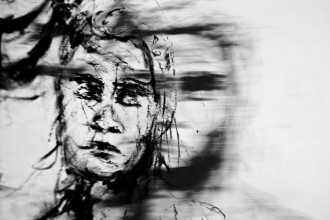The sky was crowded with dark, low-hanging rain clouds. The old man panted for breath. “I hear,†he said, as if to himself, “that drug roots out the disease.â€
I jotted down the old man’s name and address in my notes on the Angkor Wat ruins, setting them apart carefully within parentheses. Even as I did that, I couldn’t suppress a smile thinking how Cathy would type out the lines on a separate sheet of paper which she would then hand over to me saying, “Perhaps this gentleman belongs to the present century; we can’t possibly include his name and address in the book.â€
I promised the old man to ask my doctor friends back in England about the drug. If such a drug really existed, I would be sure to send it to him. One of my journalist friends could bring enough of it to last him six to twelve months.
I had been expecting my offer to brighten up the old man—amazing, isn’t it, how the East eagerly awaits every new discovery or invention to come from the West!—but his face remained entirely expressionless. With measured politeness, he said, “All right, sir, if you say so.â€
Then there was this other bhikshu I had met in a Buddhist monastery in Sri Lanka. I had mentioned to him a recent publication from New York and London which had color photographs of all the important Buddhist monuments the world over.
This monastery flanked on all sides by king coconut palms was only a short distance from Colombo. I was visiting it for the second time. I had first come here when I was on my way to Kandy and Anuradhapura, and now again as I was leaving Sri Lanka for India. In between, I had managed a trip to the ruins of Anuradhapura and taken pictures of the brick maths erected during the Sinhalese period in honor of Lord Buddha.
The Temple of Buddha’s Tooth at Kandy, with the delicate artwork on every stone and beam, was also fresh in my memory. I was terribly disappointed that they would not open for me the room that housed the celebrated relic, so that I could verify for myself whether there really was a tooth or whether the gullible people had just placed their faith in a velvet box.
The ceiling of the balcony outside this room held a painting of an elephant. I would have passed through the balcony almost without noticing it, or would have at most given it a cursory glance, had not one of the temple devotees invited me to look at it carefully. I looked up without enthusiasm, hoping to find a profile of Ganesh, the elephant god, but stopped short, and the devotee let out a short, gentle laugh, which I am sure he must have laughed many times before. The accomplished painter had so skillfully depicted a bevy of young female shrine-devotees that they merged into the figure of a colossal elephant. I asked him about the painter but he chose to ignore my question, thinking, perhaps, that it was insignificant. Instead, he started telling me about some white flowers that lay in front of the statue of the seated Buddha.
I was to ask the same question of my bhikshu friend in Colombo during my second meeting with him. The intervening period, which I had spent in different cities of Sri Lanka, had created a sort of closeness between us—a closeness which was obvious from his expression but which he was loath to admit. I guess this was because intimacy bred the very attachment that he had wanted to curb by renouncing the world and adopting the austere, saffron-dyed garb of a bhikshu. My single question prompted him to ask a few of his own about India, about Burma. Finally, I gulped down the coconut milk he had offered and got up.




